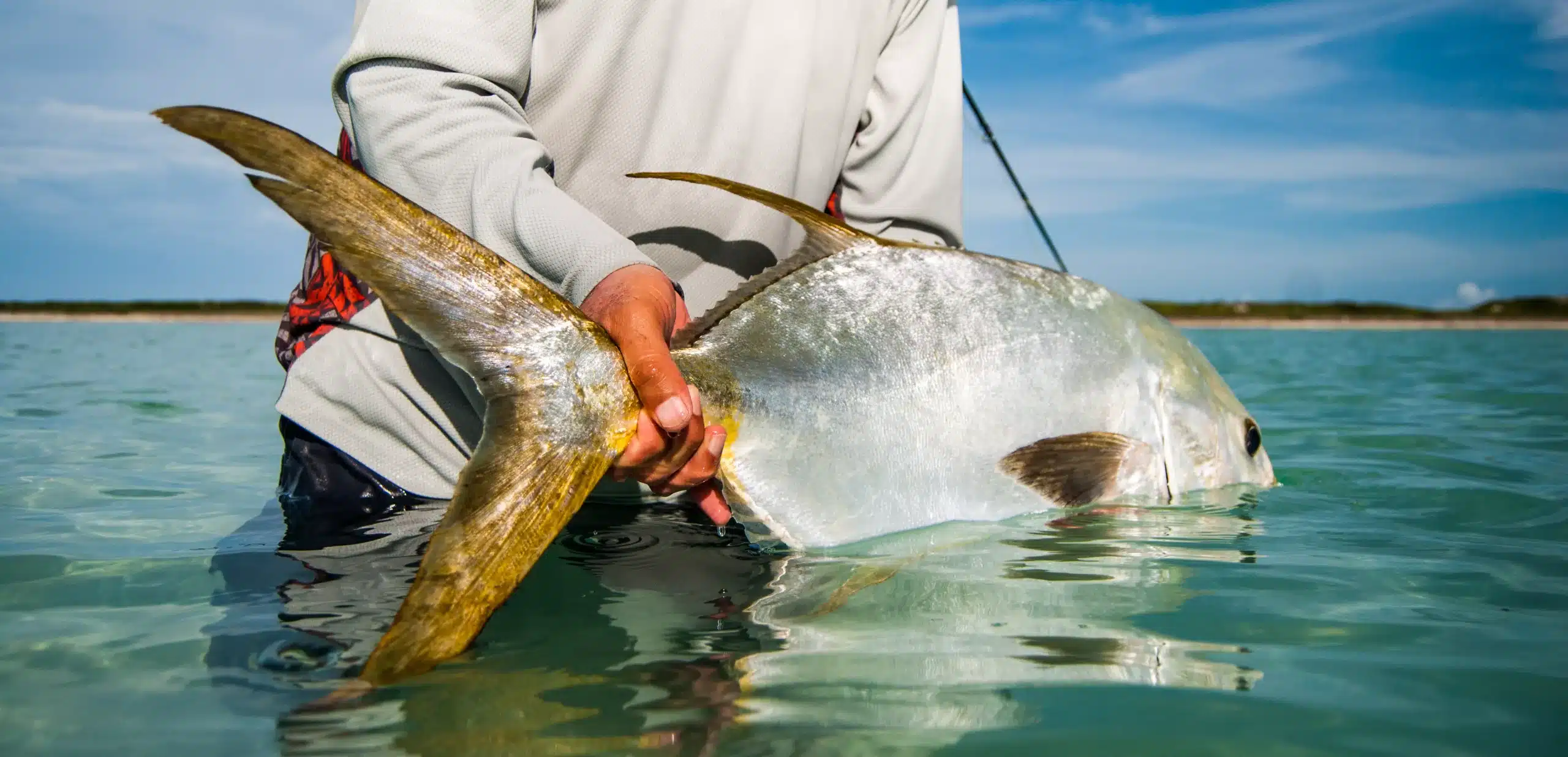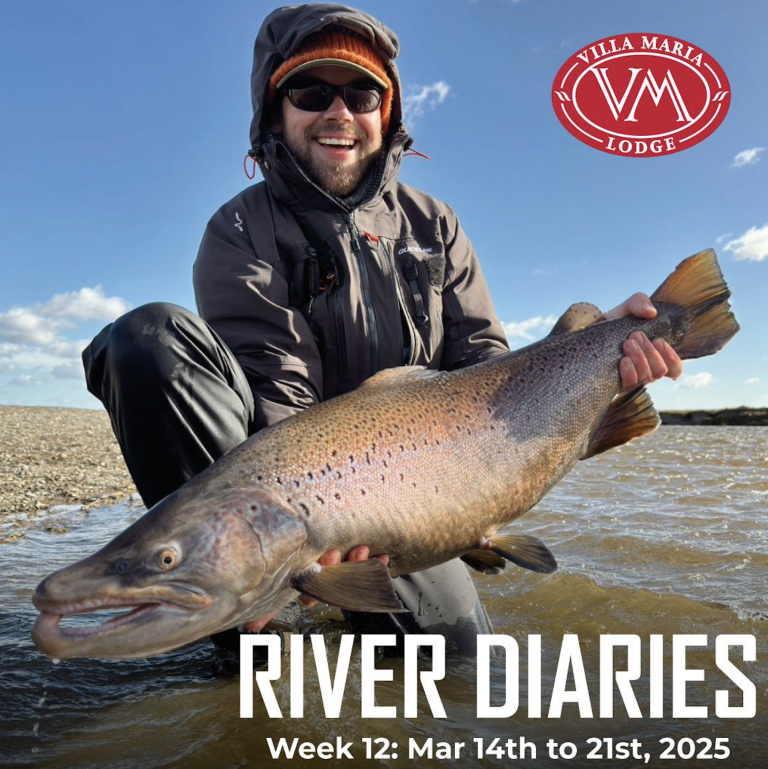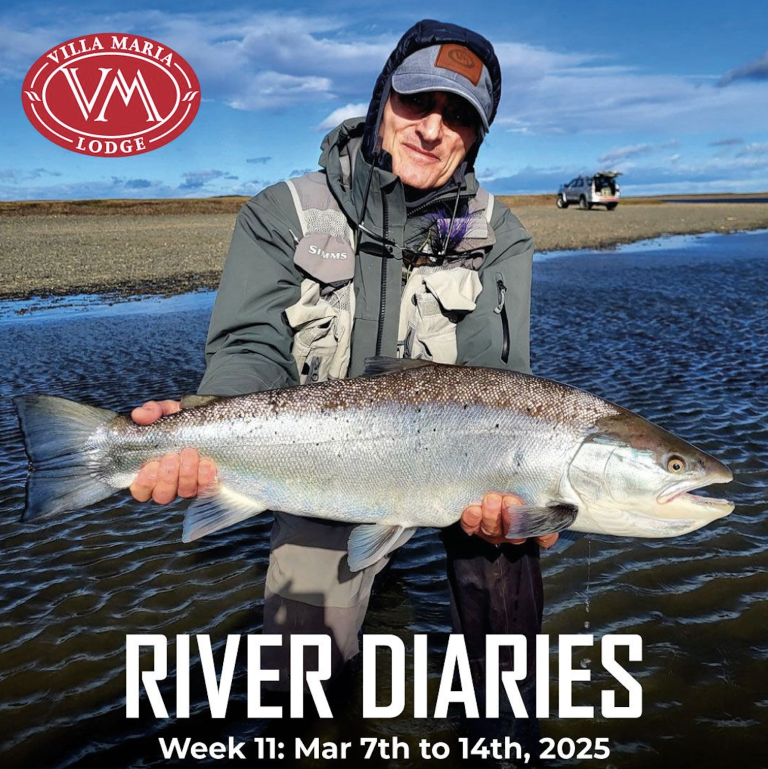I was born in Southern Patagonia in 1962 and started fly fishing at the age of 15 and it became my great passion. After more than 30 years of activity, in 2010, I had my first encounter with a Permit and I felt like a beginner, I immediately knew that this was the fish I wanted to know, pursue and try to catch. During the learning process I have fished with extraordinary guides, met outstanding fishermen, made excellent friends, traveled the four continents and caught the 4 existing species, however the challenge continues and is renewed day by day.
Carlos Cortez
The Path of the Permit
The Way
In Argentina, where we found ourselves captivated by life and our shared passion—fly fishing—there exists a truly delicious menu. The country offers an enviable selection of some of the most sporting freshwater species. Among them are a variety of salmonids, including trout and landlocked salmon. Beyond landlocked species, Argentina boasts anadromous trout as well. Then there is the northern slam: dorado, pacú, and pirá pitá. These marvelous gamefish thrive in a plethora of diverse environments, presenting endless opportunities and challenges for anglers. Such diversity encourages us to learn new techniques and continuously improve our skills. Fishing in still waters for elusive or small fish demands light, subtle equipment. Larger waters and bigger targets, however, require heavier gear to tempt and subdue these formidable adversaries. It is a joy to face the myriad possibilities that come with different fish, waters, tackle, and strategies. Yet, anglers must choose their quarry carefully, selecting appropriate tackle and mastering the skills required for each encounter. The preparation process often narrows our focus on the task at hand. However, the true joy of angling emerges when we broaden our perspective, inviting the natural environment into our realm of awareness. The splendid mysteries of nature elevate every fishing experience. The day we feel truly connected to the environment is the day we find a deeper connection with the fish themselves. As our mindset evolves, fishing takes on new meaning. It ceases to be a competition—with others, the fish, or ourselves. Instead, it becomes a jubilant game. While the fish are unaware of this game and have no choice in the matter, we find satisfaction in their wisdom, strength, and the challenges they present. From this moment onward, failure disappears from our vocabulary. In this game, there are no winners or losers, only opportunities to learn and grow. In this way, fishing transforms from a task focused on self-actualization to an act of simply being present—feeling, doing, and becoming part of nature. Claiming the title of “fisherman” often brings unnecessary pressure, driven by the expectation to fish continuously and achieve recognition. By embracing nature and the joy of the process, however, we shift our focus to respect for the ecosystem. Each angler can then find their own satisfaction on the water, allowing every moment to feel magical and maximizing enjoyment.
The Fish of My Dreams
After many years of walking the path of fly fishing, I discovered a perspective that forever changed my approach to the sport. This outlook requires that we stop viewing ourselves solely as fishermen and instead savor the process as though it were the result itself. Here, intent becomes the goal, and any capture is merely a bonus. This philosophy is particularly fitting for my favorite quarry: the permit. Trachinotus falcatusis not inherently better or worse than any other species. It is simply different. The permit inhabits the deep waters of reefs but ventures into shallow areas to feed when conditions allow. Its sensory perception is unparalleled, with keen eyesight and an acute sense of smell. Spooky and finicky, the permit perfectly embodies the concept of enjoying the process, as success with these black-tailed devils is sporadic and fleeting. The permit’s behavior is influenced by a host of variables: water temperature, clarity, tide conditions, wind, atmospheric pressure, food availability, season, and fishing pressure. The environment further shapes its habits, dictating factors like bottom type, depth, currents, and predator presence. Primarily feeding on shellfish and snails, the permit’s diet is imitated with fly patterns resembling shrimp and crabs. Pursuing this fish feels akin to a hunt, requiring anglers to find it, approach it, and execute the perfect cast—what we call the “shot,” “chance,” or “encounter.” These moments define our fishing days.
The Chances
Finding permit often depends on the guide’s knowledge and experience. Guides typically know where permit feed, but being in the right place at the right time is a challenging task. Depending on conditions, anglers look for signs like nervous water, tails, fins, flashes, mud clouds, or the fish’s silhouette. It takes time, focus, and patience to master these methods of detection. Once a fish is spotted, the angler must remain calm and concentrate on the task ahead: ensuring the line is prepared, the fly is in good condition, and the fish remains in sight. Whether on a skiff or wading, the approach is critical. Variables like the fish’s swimming speed, attitude, wind direction, and current all factor into positioning for an optimal encounter. The cast itself requires precision in both placement and timing. Fear of spooking the fish often results in casts placed too far away, leaving the fly unnoticed. Experience teaches us to rely on factors such as the fish’s speed, depth, and the type of fly chosen to determine placement. Successful presentations typically range from 1 to 4 feet in front of the fish. Timing is equally crucial. Casting within a range of 40 to 60 feet allows for accuracy and control while keeping the fish in sight. Anglers must overcome the fear of failure and commit to presenting the fly effectively, understanding that even imperfect casts can sometimes yield strikes.
The Choice of Fly and Stripping
Most preferred flies are shrimp and crab imitations, though bites or catches sometimes occur with small fish imitations, usually by accident. Permit are opportunistic feeders, and while their diet is primarily composed of shellfish, both shrimp and small fish are present in their environments. The key is placing the fly in the permit’s field of vision without spooking it and keeping it there long enough to tempt the fish. A well-tied fly should mimic the appearance, size, and behavior of the permit’s prey. The most common mistakes include presenting the fly too far away, not allowing it to sink into the feeding zone, making sudden movements that cause drag, and stripping the fly too quickly out of the fish’s field of vision. When fishing with crabs, the goal is to make the fish see the fly and keep it in its field of view as long as possible. In contrast, shrimp patterns are often retrieved to stimulate a strike, particularly in areas with strong currents. Fly weight is adjusted based on depth and bottom structure, with heavier crabs for deep waters and lighter ones for shallow or grassy bottoms. Inexperienced anglers should rely on their guides for advice while gradually developing their own techniques through personal experience.
The Bite and Hookset
Stripping flies like shrimp often leads to the most efficient hook sets, as the angler feels the tension of the bite and reacts instinctively. In other scenarios, setting the hook relies on visual cues and intuition. A permit inhales its prey by sucking in water, filtering it, and breaking shells with its crushers before exhaling the fragments. To set the hook successfully, the angler must maintain tension during the inhale, as the fly can otherwise be expelled during exhalation. Watching the permit’s body language is critical. A lifted tail often signals feeding, while an open mouth indicates the fish is inhaling. Keeping the rod aligned with the fly and applying steady pressure during a strip set can secure the hook effectively.
The Real Difficulty
Unlike blind fishing, where much relies on intuition, sight fishing with permit involves direct interaction. This visibility adds both frustration and reward. On average, a fishing day might yield four to eight chances. Factors like poor visibility, wind, or nervous fish can complicate even the best-prepared casts. Permit fishing isn’t about perfection but about embracing the process and appreciating the challenges. As anglers, we grow through each encounter, learning to respect the permit and the environment it inhabits.
Conclusion
I hope this description helps you understand the unique characteristics of fly fishing for permit and the profound sensations it evokes. The mystique of the permit lies in its challenge, but by approaching it with calmness, respect, and adaptability, we begin to see it as just another fish—one that offers extraordinary opportunities to learn and grow.





